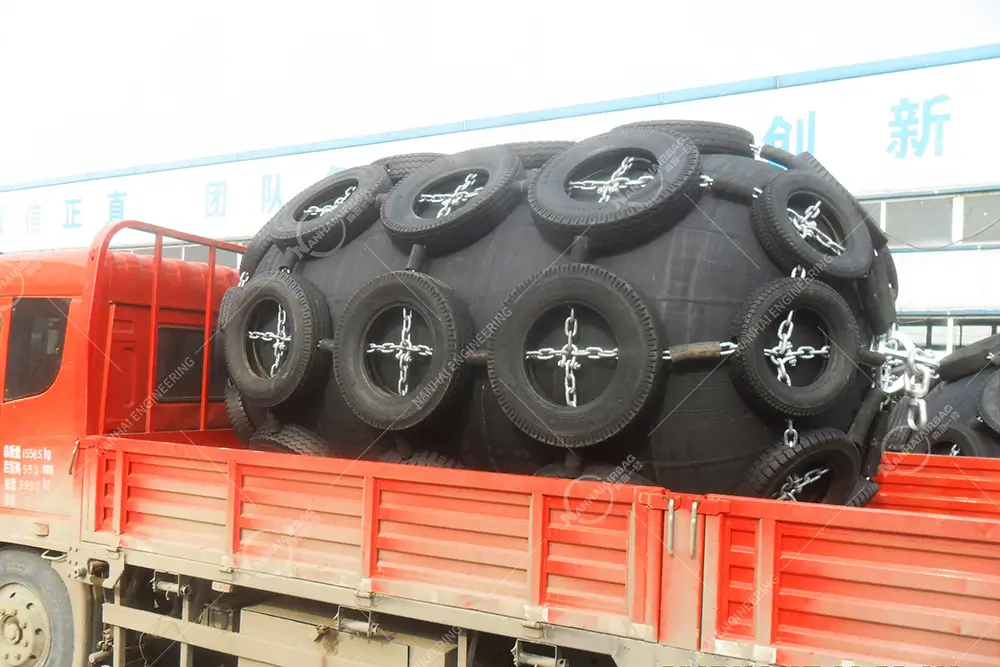How UHMW-PE Faced Fender Panels Reduce Vessel Damage?
06/23/2025How thick are foam fender covers usually?
06/24/2025How to transport Yokohama fenders?
Why It Matters – A Real-World Wake‑Up Call
Picture this: You’re in charge of outfitting a busy port—or maybe you’re prepping a crew for a ship‑to‑ship (STS) operation mid‑sea. You’ve got your Yokohama pneumatic fenders—a top choice for protecting hulls thanks to their low reaction force and high energy absorption.
But here’s the catch: Transporting them improperly can damage the material, void warranties, and compromise performance. Time is money—especially in shipping. If your fenders arrive damaged, you’ll face delays, increased costs, and angry clients. That’s why getting it right is urgent—every single time.
Feature Snippet: How to Transport Yokohama (Pneumatic Rubber) Fenders
1. Inspect, clean & dry before packing – Check for leaks, wear, or cracks. Clean thoroughly and let them dry completely before packing to avoid mold formation and material degradation.
2. Deflate and fold properly—Fully bleed air, fold lengthwise, then roll tightly (not crush) to reduce size and prevent stress on rubber layers.
3. Choose the right mode & protective packaging –
- Land (truck/container): place on pallets, secure with straps or brackets, use padding to avoid contact with hard surfaces.
- Sea: wrap in waterproof film or bags, secure inside a container with straps and isolation padding.
- Air: pack in wooden crates and follow airline volume/weight rules.
Level Up: Pro Tips for Storing and Shipping Yokohama Fenders
If you’re nodding along—thinking, “I know the basics, but what about storage or international shipping?”—then buckle up. We’re diving deeper into tailored tips, bonus tricks, and FAQs that will make you look like a fender‑moving pro. Keep reading to impress your boss (and maybe sleep better tonight ).
Step‑by‑Step Transport Checklist
Before Packing
- Inspect valves, chains, netting, and metal flanges
- Clean and dry thoroughly
Packing & Folding
- Fully deflate and slowly crease lengthwise
- Roll gently, not forcefully, to avoid overstressing the rubber
Mode-Specific Methods
- Land/Truck: use pallets, ratchet straps, and padding
- Sea: wrap in plastic, secure with straps, consider humidity buildup
- Air: low-volume wooden crates, check airline regulations
In-Transit Protection
- Use waterproof film/dust wraps
- Keep away from extreme temps; consider cool, ventilated containers
Upon Arrival
- Unpack carefully, check for deformities and leaks
- Re-inflate per ISO 17357- 1:2014 pressure specs (typically 50 kPa or 80 kPa)

Bonus Section: Storage & Lifecycle Care
Once you’ve transported your Yokohama pneumatic fenders, here’s how to keep them working great year after year:
- Store rolled, slightly inflated (per manufacturer guidance) in cool, dry, shaded areas—no UV, no extreme temps
- Inspect periodically—check for cracking, ozone exposure, corrosion on metal fittings, especially after STS or high-stress use
- Clean regularly and apply silicone protectants to prolong rubber life
FAQ
How do you fold a pneumatic rubber fender?
Fully deflate, fold it lengthwise, then roll it gently. Avoid sharp bends or creases that can damage internal cord layers.
Can Yokohama fenders be shipped inflated?
Yes—for smaller units manufacturers may ship inflated. But deflating and rolling is often safer and more cost-effective.
What pressure should I reinflate Yokohama fenders at the destination?
Refer to ISO17357‑1:2014 and pack specs—common pressures are 50 kPa or 80 kPa ,depending on fender size/type.
Why are Yokohama pneumatic fenders better than solid rubber?
They provide soft, linear reaction force, excellent energy absorption even at angles, and no hardening under excess loads—unlike solid/foam fenders.
